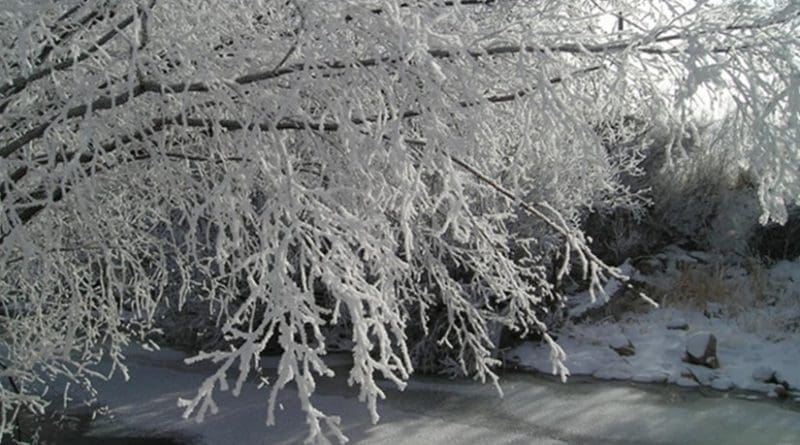Forecasters Look Higher For Clues To Winter Weather
Long-range winter weather forecasts could be twice as accurate by taking account of unusual winds miles up in the stratosphere, scientists have found.
Meteorologists at the University of Reading, European Centre for Medium-Range Weather Forecasts (ECMWF) and Environment Canada found that by taking account of changing winds in the stratosphere, forecasters could be twice as certain of their winter weather predictions for between a fortnight and a month in advance.
The findings mean that forecasters can be more certain about predicting extreme winter weather up to four weeks before it happens, giving governments, businesses, and individuals more certainty when planning for extreme events, such as floods or snow storms.
The new research was published Tuesday in the journal Environmental Research Letters.
Dr Om Tripathi, from the Department of Meteorology, University of Reading, who led the research, said, “Forecasting the weather a full month ahead is a tough ask, but that’s what businesses and emergency services really need to prepare for extreme winter weather.”
According to Tripathi, “Accurate advance notice of prolonged cold spells, such as the ‘polar vortex’ that hit North America over the past two winters, can save lives and help keep power and transport networks running.”
Tripathi added, “Our latest findings should give forecasters more confidence when issuing some winter weather forecasts up to a month in advance.”
High up in the stratosphere is the polar night jet stream, at around 40km (25 miles) above the surface of the Earth – around the height reached by record-breaking parachutist Felix Baumgartner.
Winds in the polar night jet stream usually blow from the west and have speeds of around 70mph. The research team found that during conditions in which the polar night jet stream wind speeds exceed 90mph, or reverse their direction to flow from the east, forecasts in both the stratosphere and troposphere (the layer of atmosphere closest to the ground), are more skillful.
While it was previously known that a sudden weakening of these winds, and subsequent warming of the stratosphere, was a source of predictability, the researchers found that the opposite was also true when the polar night jet stream strengthened and the polar stratosphere was unusually cold. Such stratospheric conditions occur up to 3-4 times a winter, meaning that around one in five winter ‘sub-seasonal’ forecasts (those looking 2-4 weeks ahead) might benefit from this effect.
The strength of stratospheric winds can influence the position of the jet stream in the troposphere, having a major influence on weather across the North Atlantic, and allow freezing polar air to travel further south than would normally be expected.
The researchers examined 30 years’ worth of past forecast data to see how the state of the stratosphere affected the accuracy of the forecast.
Dr Andrew Charlton-Perez, University of Reading, who co-authored the study, said, “We are only just beginning to learn how conditions in the stratosphere influence our weather several weeks later.
“The more we learn about these links, along with other processes in the tropical atmosphere and links between the land surface and the atmosphere, the more we can improve weather forecasts on this important sub-seasonal timescale,” Charlton-Perez said.
Improving sub-seasonal forecasts is the focus of several current major international initiatives including the S2S project, sponsored by the World Meteorological Organisation. This research was part of the SNAP project, which contributes to this effort by working with researchers in seven countries on stratospheric predictability and its influence on the troposphere.

